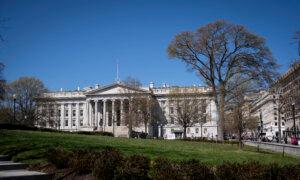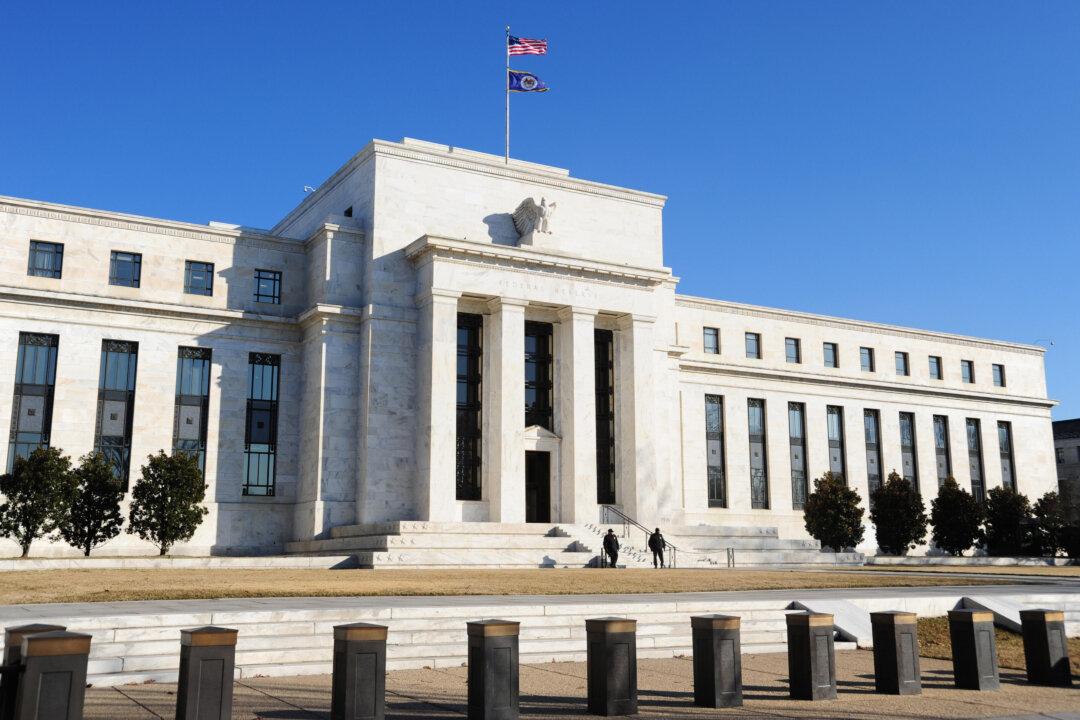Establishment Survey Versus Household Survey
The establishment survey report shows that total jobs—both part-time and full-time—increased in March, month over month, by 303,000. The establishment survey measures only total jobs, however, and does not measure the number of employed persons. That means that even when job growth comes mostly from people working multiple part-time jobs, the establishment survey shows big increases while the total number of employed persons does not. In fact, total employed persons can fall while total jobs increase.This may help explain why there has been a sizable gap between the establishment survey and the household survey since early 2022. If we look at the total increase in both measures over the past three years, we find a gap has opened and persisted over more than two years. Indeed, as of the March report, the gap is at 3.5 million. The household survey also shows that total employed persons has been virtually unchanged for eight months. Since August 2023, total employed persons has decreased by 34,000. Over the same time period, total “jobs” has increased by more than 1.7 million. Since November 2023, total employed persons has fallen by 400,000.
A Recession in Full-Time Jobs
Looking at total growth in employed persons versus total growth in “jobs,” we find that there is virtually no growth in employed persons despite constantly rising totals of jobs. It appears the job growth we do see is overwhelmingly part-time jobs only.Over the same eight months that total employed persons has stagnated—and total jobs increased by 1.7 million—we find only growth in part-time jobs. Since August 2023, total part-time jobs has increased by 1.4 million. During the same period, full-time jobs fell by more than 1.3 million. That is, net job creation during that period has been all part-time.
Similarly, temporary jobs are often the first jobs to be eliminated by firms, and as the BLS puts it, “flexible labor arrangements provided by temp agencies allow firms to scale down their operations readily and without the added expense of separation pay or having to let go of their best workers.” In a weakening economy, there is no longer a need to use THS workers as a means of screening potential new workers or adding work hours to supplement the full-time workforce. It appears that over the past year, the need for new workers has been fading fast and that dropping temp workers is a cheap way to cut costs.
Another concerning aspect of this report is the fact that government jobs make up more than 20 percent of all new jobs. Of the 303,000 new payroll jobs added according to the establishment survey, 71,000 of those were government jobs—or 23 percent. Historically, this ratio suggests an approaching recession, since, in times of solid economic growth, government jobs rarely make up more than 10 percent or 12 percent of job growth. Year over year, government jobs have been responsible for more than 20 percent of all growth in jobs—also an indicator of recession.
Indeed, the establishment survey’s monthly “blowout” job growth is one of the few bits of good news in economic data coming out of the federal government. As questionable as these numbers are, they do lead to one good political phenomenon: The Federal Reserve is using the “good” jobs numbers as political cover to avoid an immediate return to the full-blown easy-money policies we saw for most of the past decade. Since 2022, rising price inflation has forced the central bank to allow interest rates to increase to more reasonable levels. After more than a decade of ultra-low interest rate policy, price inflation became impossible to ignore.
Now, after more than a year of slightly more reasonable interest rate policy, pressure from elected officials and the Wall Street lobby has been mounting. The “strong” jobs numbers, however, have allowed Fed officials to claim that there is no immediate need to force the policy interest rate back down to under 1 percent. Once recession becomes undeniable, however, we can expect the central bank to again open the money spigots. Price inflation will again surge.












